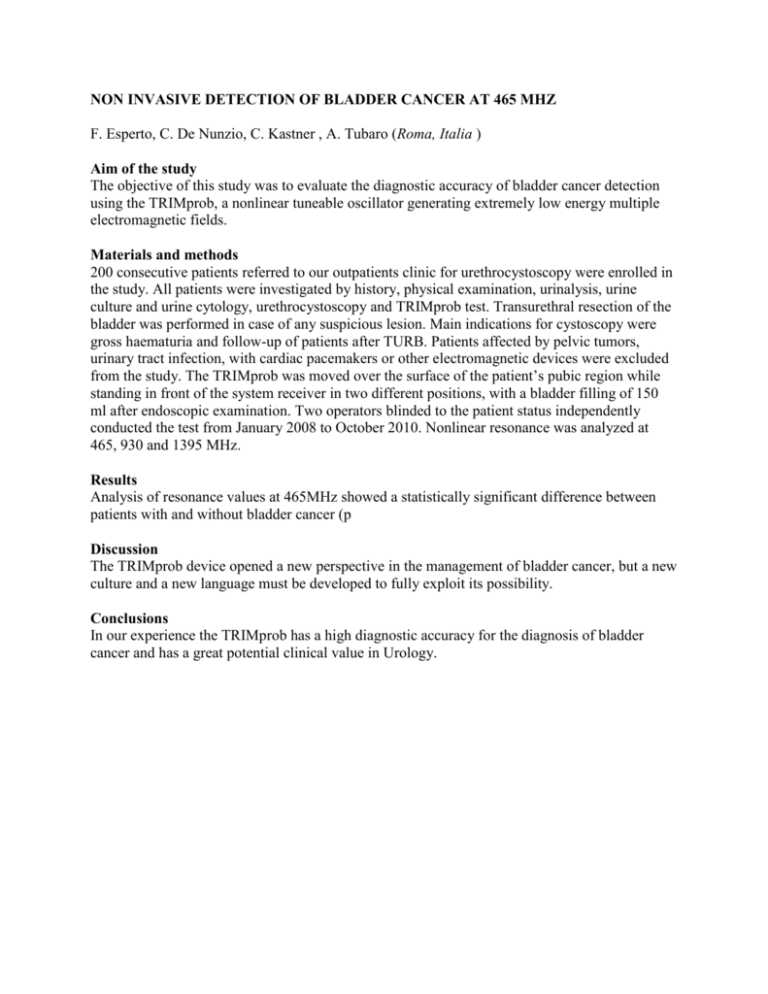non invasive detection of bladder cancer at 465 mhz
advertisement

NON INVASIVE DETECTION OF BLADDER CANCER AT 465 MHZ F. Esperto, C. De Nunzio, C. Kastner , A. Tubaro (Roma, Italia ) Aim of the study The objective of this study was to evaluate the diagnostic accuracy of bladder cancer detection using the TRIMprob, a nonlinear tuneable oscillator generating extremely low energy multiple electromagnetic fields. Materials and methods 200 consecutive patients referred to our outpatients clinic for urethrocystoscopy were enrolled in the study. All patients were investigated by history, physical examination, urinalysis, urine culture and urine cytology, urethrocystoscopy and TRIMprob test. Transurethral resection of the bladder was performed in case of any suspicious lesion. Main indications for cystoscopy were gross haematuria and follow-up of patients after TURB. Patients affected by pelvic tumors, urinary tract infection, with cardiac pacemakers or other electromagnetic devices were excluded from the study. The TRIMprob was moved over the surface of the patient’s pubic region while standing in front of the system receiver in two different positions, with a bladder filling of 150 ml after endoscopic examination. Two operators blinded to the patient status independently conducted the test from January 2008 to October 2010. Nonlinear resonance was analyzed at 465, 930 and 1395 MHz. Results Analysis of resonance values at 465MHz showed a statistically significant difference between patients with and without bladder cancer (p Discussion The TRIMprob device opened a new perspective in the management of bladder cancer, but a new culture and a new language must be developed to fully exploit its possibility. Conclusions In our experience the TRIMprob has a high diagnostic accuracy for the diagnosis of bladder cancer and has a great potential clinical value in Urology.











